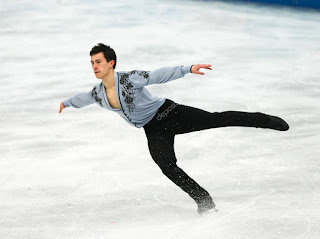
Ice skating is believed to have been around for more than 3,000 years when people in southern Finland tied sharp, flattened bones to the soles of their feet. This form of ice skating was more like sliding than ice skating, and it wasn’t until an iron blade was used that the Dutch made ice skates with sharp-edged blades in the 1200s or 1300s. Ice skating was introduced to England in the 1600s and the first organized skating club was established in the 1740s. founded, called the Edinburgh Skating Club. Today, ice skating is a competitive sport, a form of transportation and recreational activity that can be practiced on indoor and outdoor ice rinks, as well as in naturally occurring frozen bodies of water such as rivers, lakes, and ponds.
Ice skating probably developed in Scandinavia as early as 1000 BCE, the first skates being made from shank or rib bones of elk, oxen, reindeer, and other animals.
Ice skating is used in several different competitive sports including ice dancing, figure skating, speed skating, ringette and ice hockey.
It is not known when the metal runner was introduced, but early Dutch prints depict skates with metal blades.
Figure skating began in the 1850s when skaters began experimenting with different jumps and spins on ice.
Until the middle of the 19th century the metal portion of the skate was fastened to a wooden base or footplate and the whole of the skate was fastened to the foot with leather thongs or straps.
In 1896 the first men’s World Figure Skating Championships were held in Russia.
Skating on the frozen ponds and fens was popular in England in the 17th century, and the first skating club was formed in Edinburgh, Scotland, in 1742.
In 1906 the first women’s World Figure Skating Championships were held in Switzerland.
In the 1740s British servicemen introduced ice skating to North America.
During Olympic figure skating competitions the skaters are not permitted to use music to accompany their routine if there are vocals. The music must be instrumental only.
Napoleon Bonaparte skated at Auxerre in 1781.
Speed skating, figure skating and ice dancing are all Olympic competitions. Ice hockey is also an Olympic sport.
The development of refrigerated ice rinks started the transformation of ice skating from a seasonal pastime to a major sport and entertainment.
When ice skating was still a new past-time in Europe it was limited to the upper class. This was true in China as well during the Song dynasty and the Qing dynasty.
The first rink with artificially frozen ice, a private one, the Glaciarium, was opened in London in 1876.
By the mid-1800s ice skating had become popular in Britain among the middle and upper class.
The first artificially frozen rink in the United States was installed in the old Madison Square Garden in New York City in 1879.
‘Rink mania’ occurred in 1841 to 1844 when early attempts were made to construct artificial ice rinks made of hog’s lard and salts.
Sports involving ice skating alone were organized by the National Skating Association of Great Britain (1879), the National Amateur Skating Association of the United States (1886), and the Amateur Skating Association of Canada (1888).
Racing on ice skates began as a spectator sport among the lower class and laborers.
World championships had begun in the 1890s for speed skating (men only) and figure skating.
The first ice skating book with instructions was published in 1772 and was written by Robert Jones, a British artillery lieutenant. The book was written for men as skating was not yet a women’s past-time in the late 1700s in Britain.
Women’s speed-skating world championships were first held in 1936.
There have been two major theories about why it is possible to skate on ice. One was called ‘pressure melting’ and the other was called ‘friction heating’. Both theories proved incorrect.
Figure skating for men, women, and pairs was included in the Olympic program at the 1908 Games in London, and other skating events were added later: speed skating for men in 1924 and for women in 1960; ice dancing in 1976; and short-track speed skating in 1992.
Accidents while ice skating are most common during hockey games, collisions and in pair skating.
Ice hockey appeared in the Summer Olympics in 1920 and was included in the Winter Games upon their inauguration in 1924.
Falling through frozen ice is a major danger of skating on naturally occurring frozen water bodies as the ice is not always as solid as people believe.
In 1998 women’s hockey made its Olympic debut.
Kite ice skating is becoming more popular and involves wearing skates and using a controllable kite to propel oneself across a frozen lake or river.
Skate sailing, the sport of moving over ice on skates by carrying a small sail for propulsion by the wind. It probably originated in the Scandinavian countries and was practiced in some form or another almost immediately after the invention of the skate.
Tour skating is another popular form of skating and involves long distance skating on natural ice tracks or ice tracks on the ground.
One of the first skate-sailing organizations was the Ice-Skate Sailing Club, formed in Stockholm in 1901.
Michelle Kwan is a famous U.S. figure skater that has won five World Figure Skating Championships.









